You know my love of plants! They are everywhere in our home. I love to take them outside in the warmer months. Not only do they love the sunshine, but they fill up our back patio space. This allows me to not have to purchase many annuals that I would throw away. I also have many cacti that I bring outside. This is when they grow as they mostly go dormant inside. Let me first start off by saying that this is how I transition plants back inside. There is no “right way” and I’ve seen people do this several different ways. This is what has worked for me for many years and I often get asked about it, so I wanted to have permanent spot. Spoiler alert: what I do is SUPER EASY and it really doesn’t need much of a tutorial. But here goes! Here’s how to transition indoor plants back inside.
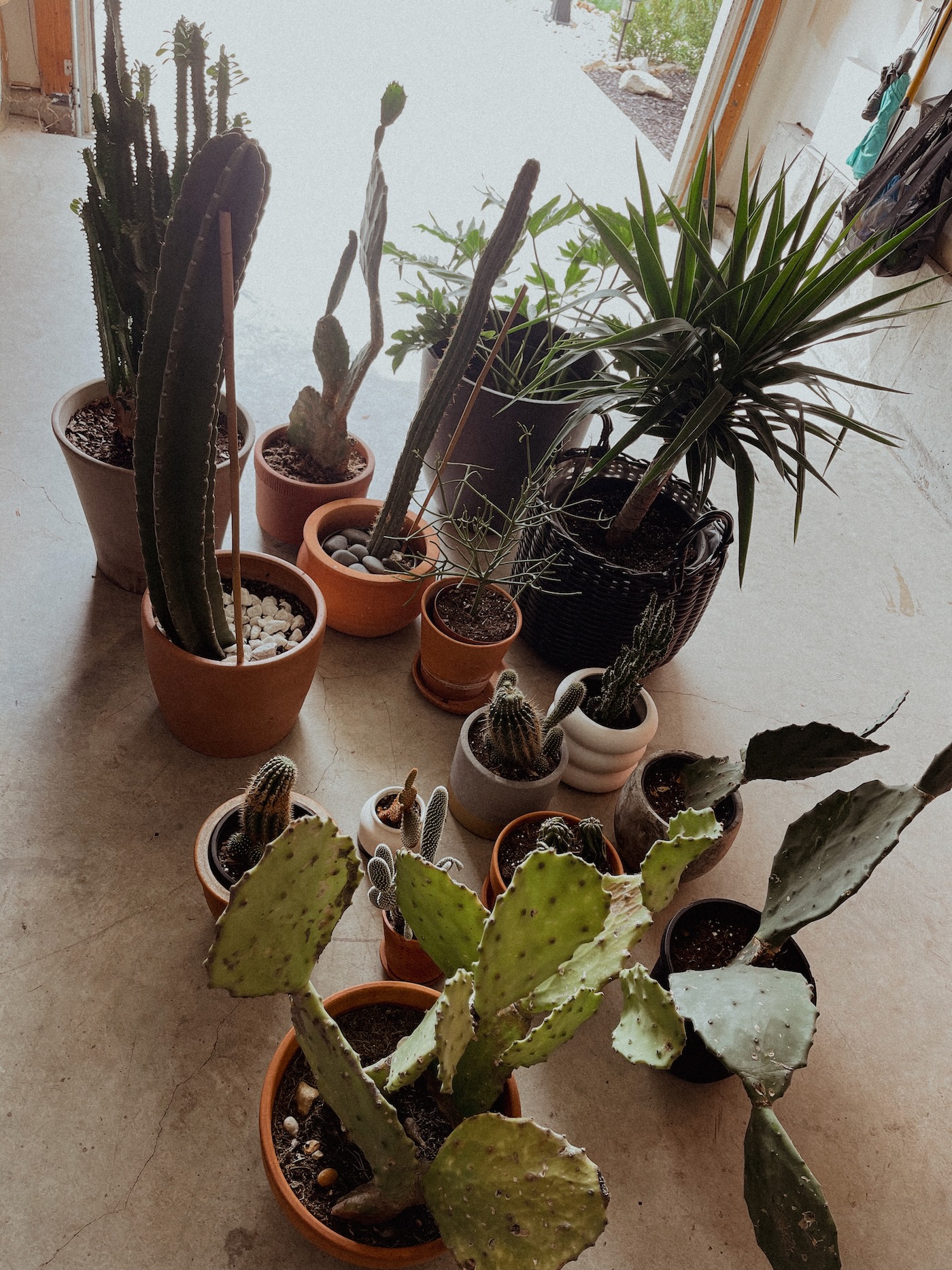
What Plants Go Outside?
For me, I like to take tropicals and cactus outside. These plants thrive with bright sunlight. You can also take snake plants, ficus family plants, really anything! I have so many plants that I have to pick and choose what I have room for.
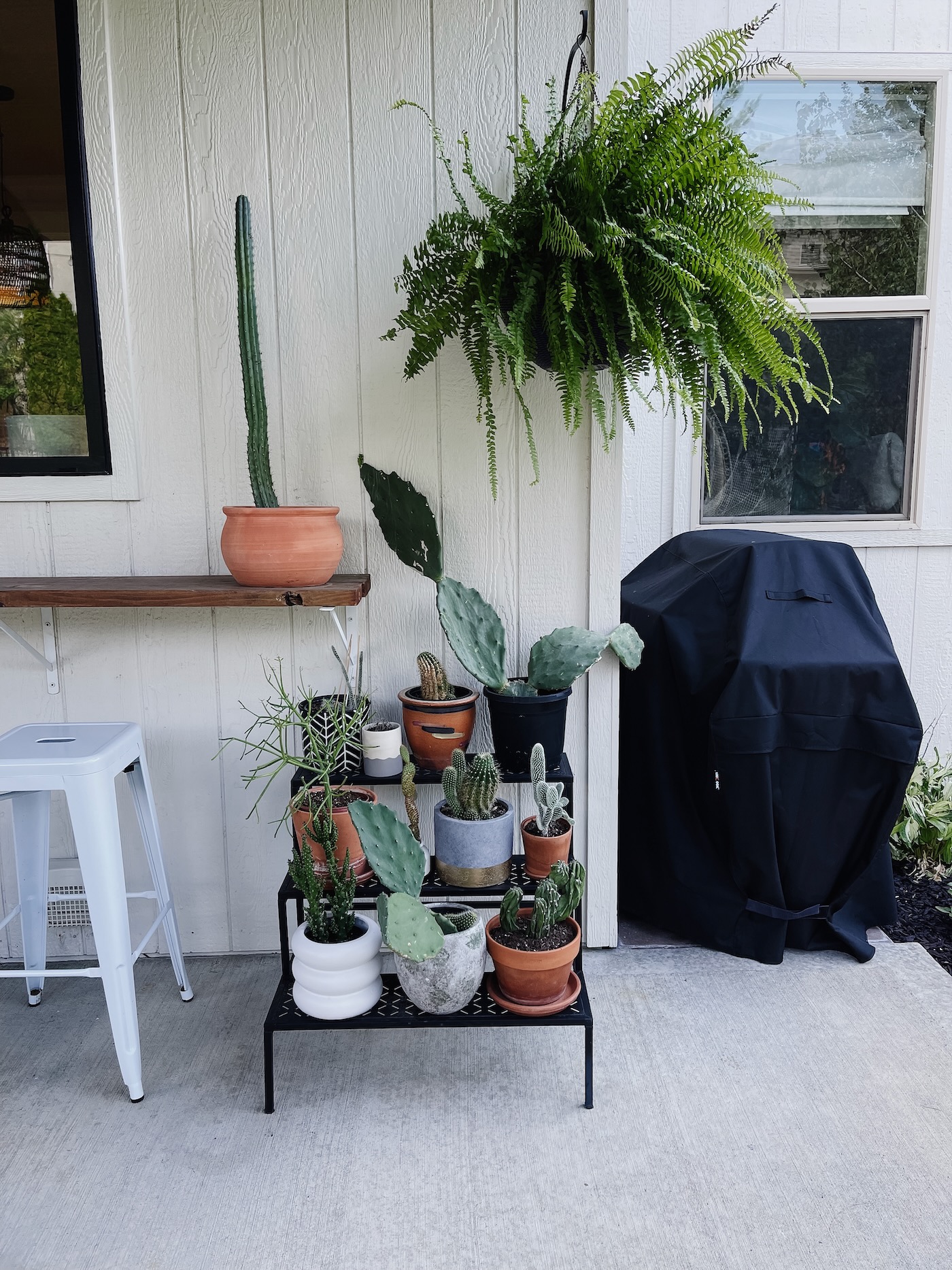
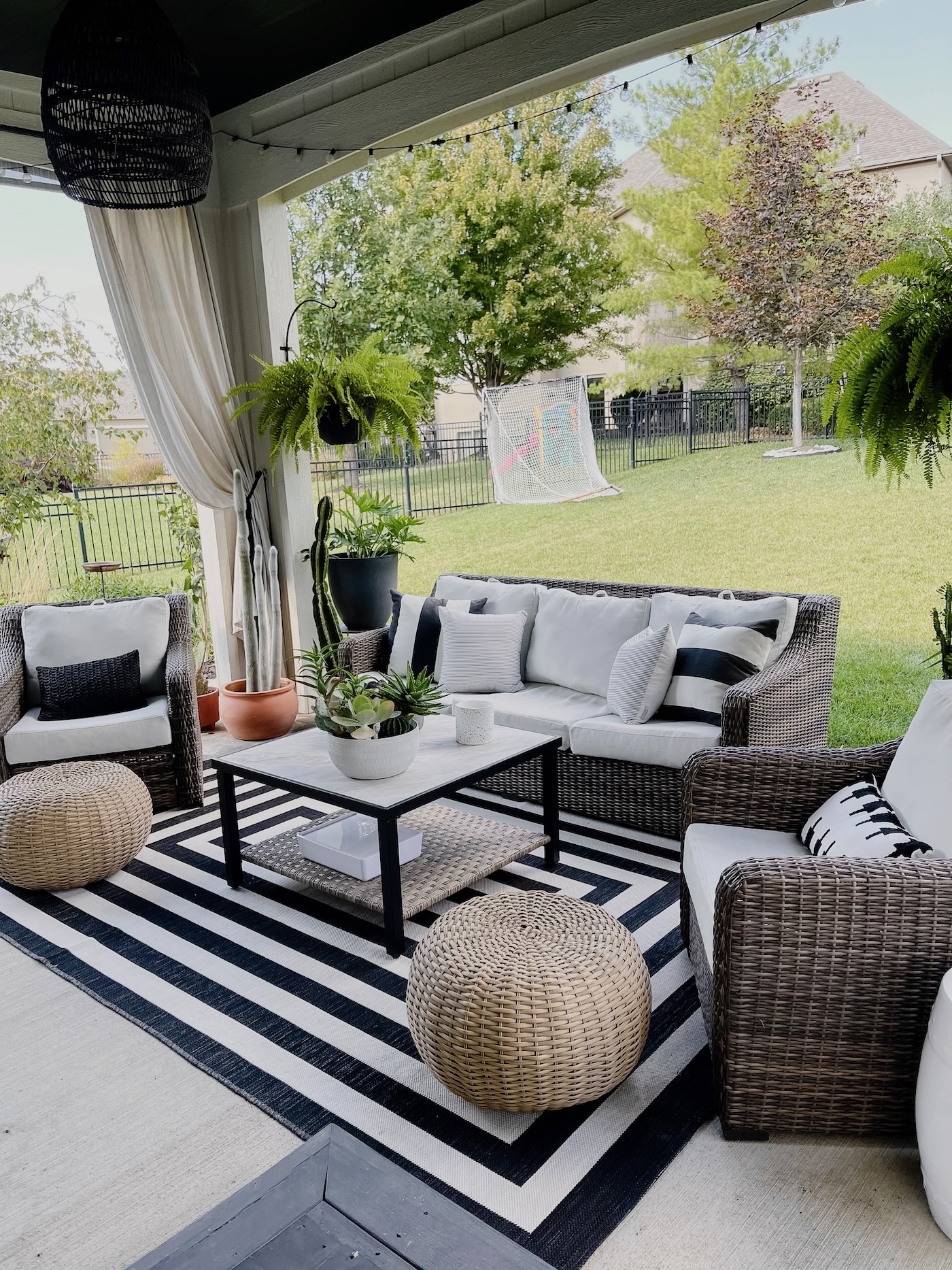
When To Start the Transition
I start thinking about transitioning plants back inside when the forecast shows low temps below 50 degrees. Cactus can do okay in cooler temps, but usually I start to transition in early October here in Kansas. When I know the transition is approaching, I stop watering these plants. It’s not as hot outside so they don’t need daily watering anymore. Not watering allows them to dry out for a few days prior to the transition.
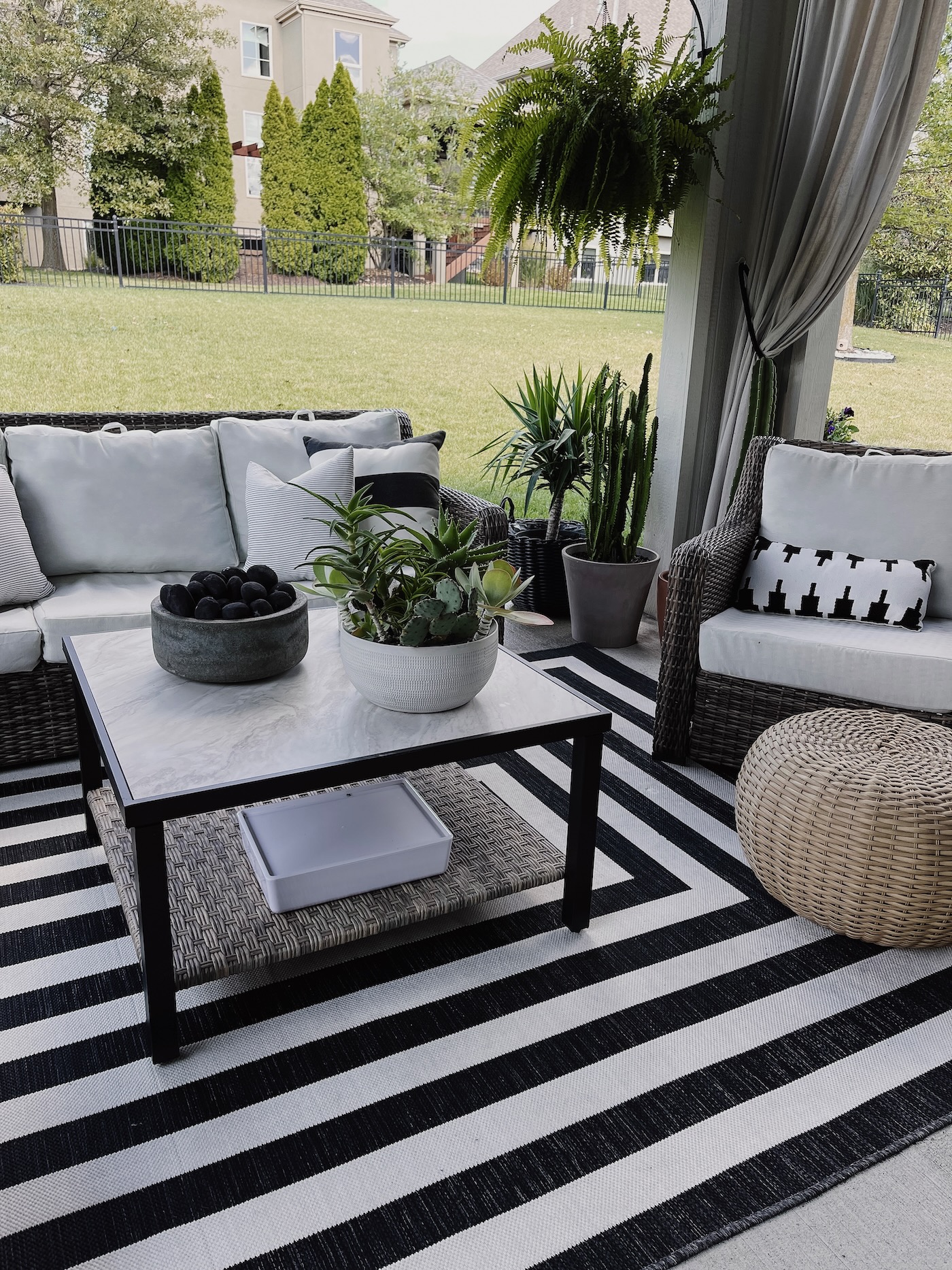
How to Transition Indoor Plants Back Inside
- First up, you need to haul all your plants to a covered space. In my case, it’s the third car garage stall. These will be staying here for a few days, so you need to make sure it’s somewhere outside, but inside if that makes sense.
- After I have all my indoor plants back in the garage, I take a small shovel and start removing the top layer of of soil. Maybe take off the top few inches. I put this extra soil in a large bucket and throw in my homemade compost bin.
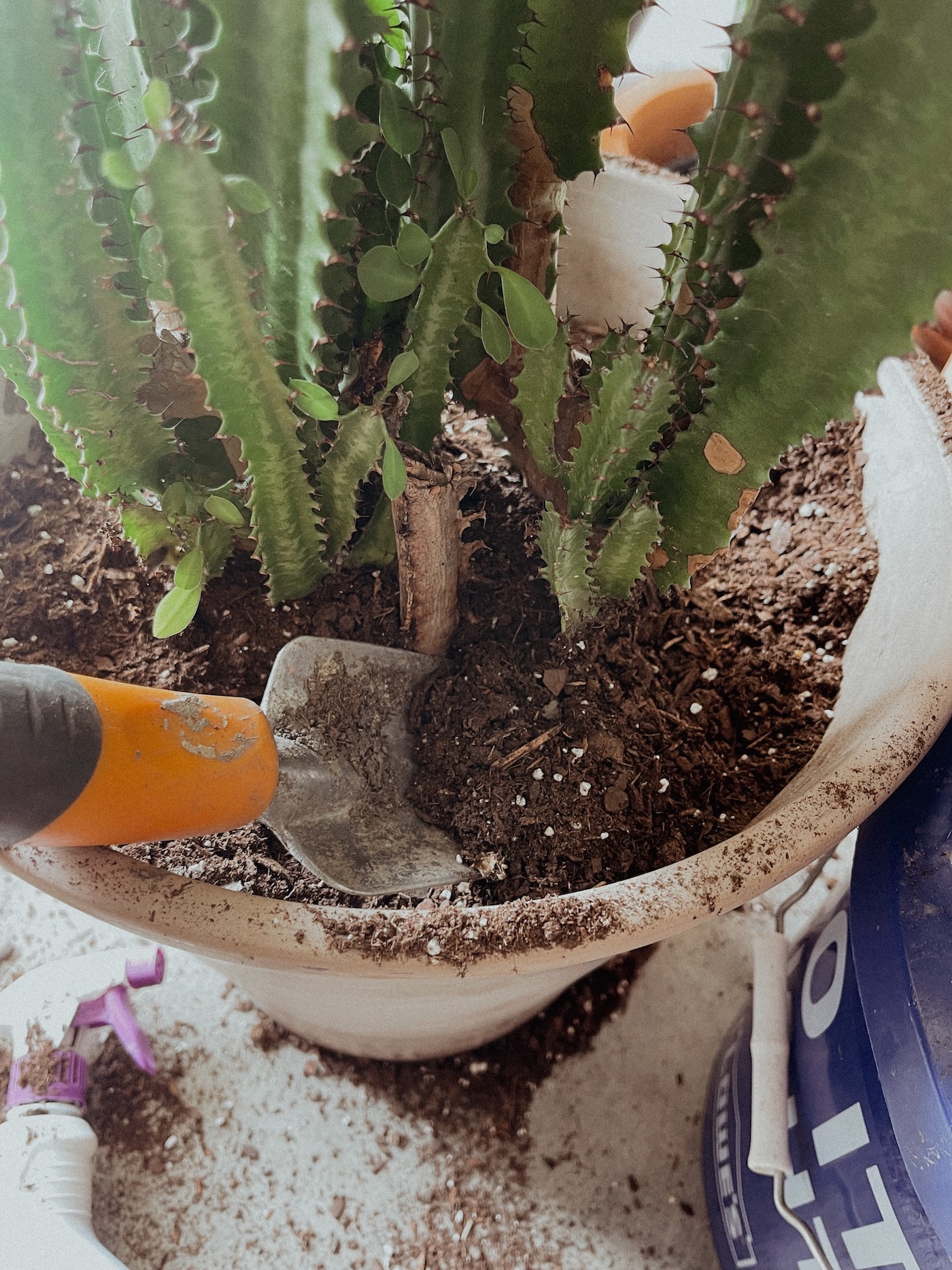
- Once the top layer is gone, you can sort off rough up the rest of the soil with your hands or a shovel or stick or whatever you have on hand. I don’t remove the entire root ball from the pot. You just want to make sure no critters are hanging out below the surface. At this time, you will also want to wipe down the pots to make sure the sides and the bottom are free from spider webs, etc. I use the same pots inside and outside. Give the pot and plant a good once over to make sure they are free from spider webs, leaves, debris, etc.
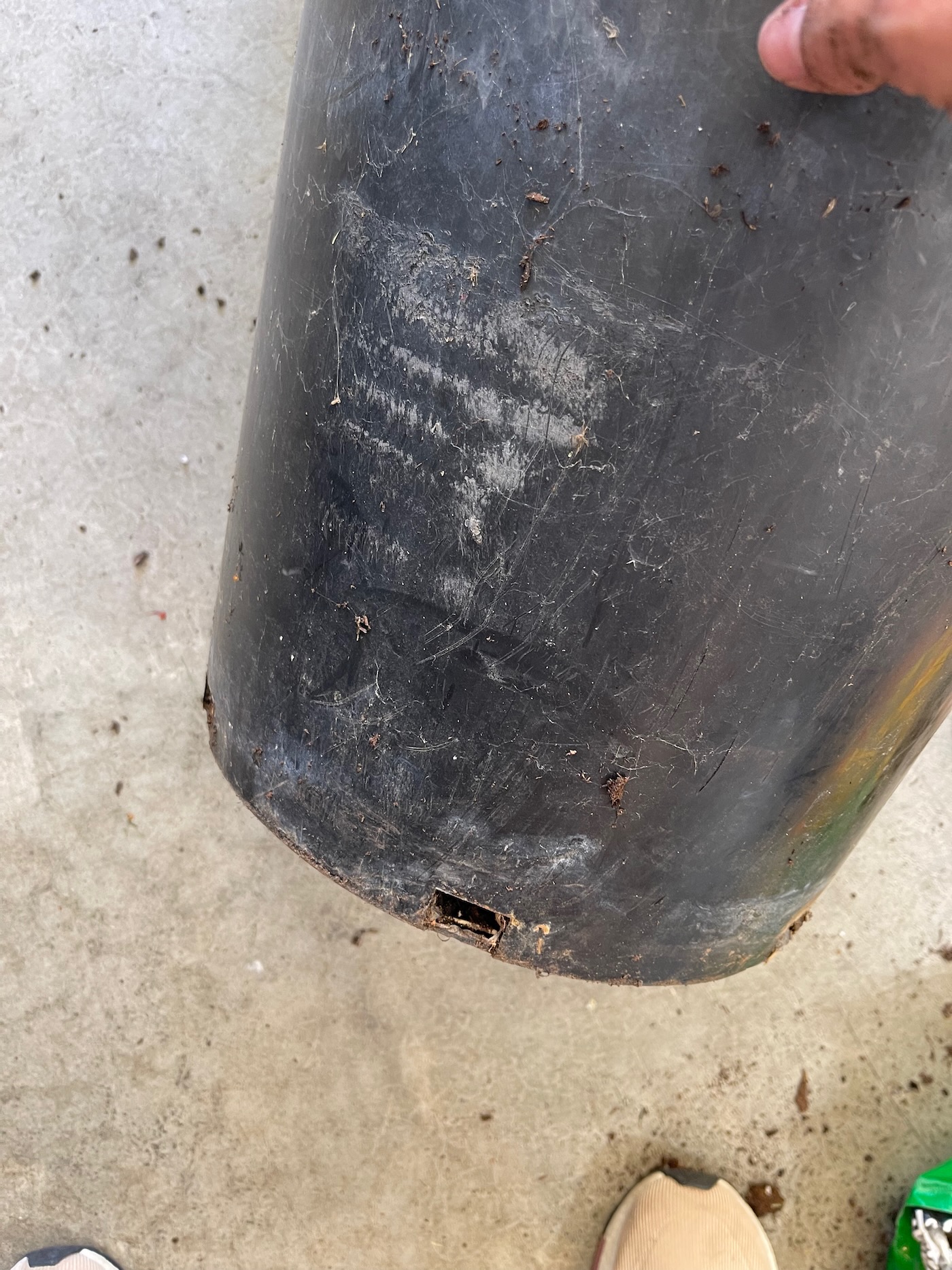
- Next, I spray garden insect spray to saturate the soil. This particular spray will not kill the plant, but will get rid of any insects. You can spray and rough up the soil a bit more so it gets a little deeper.
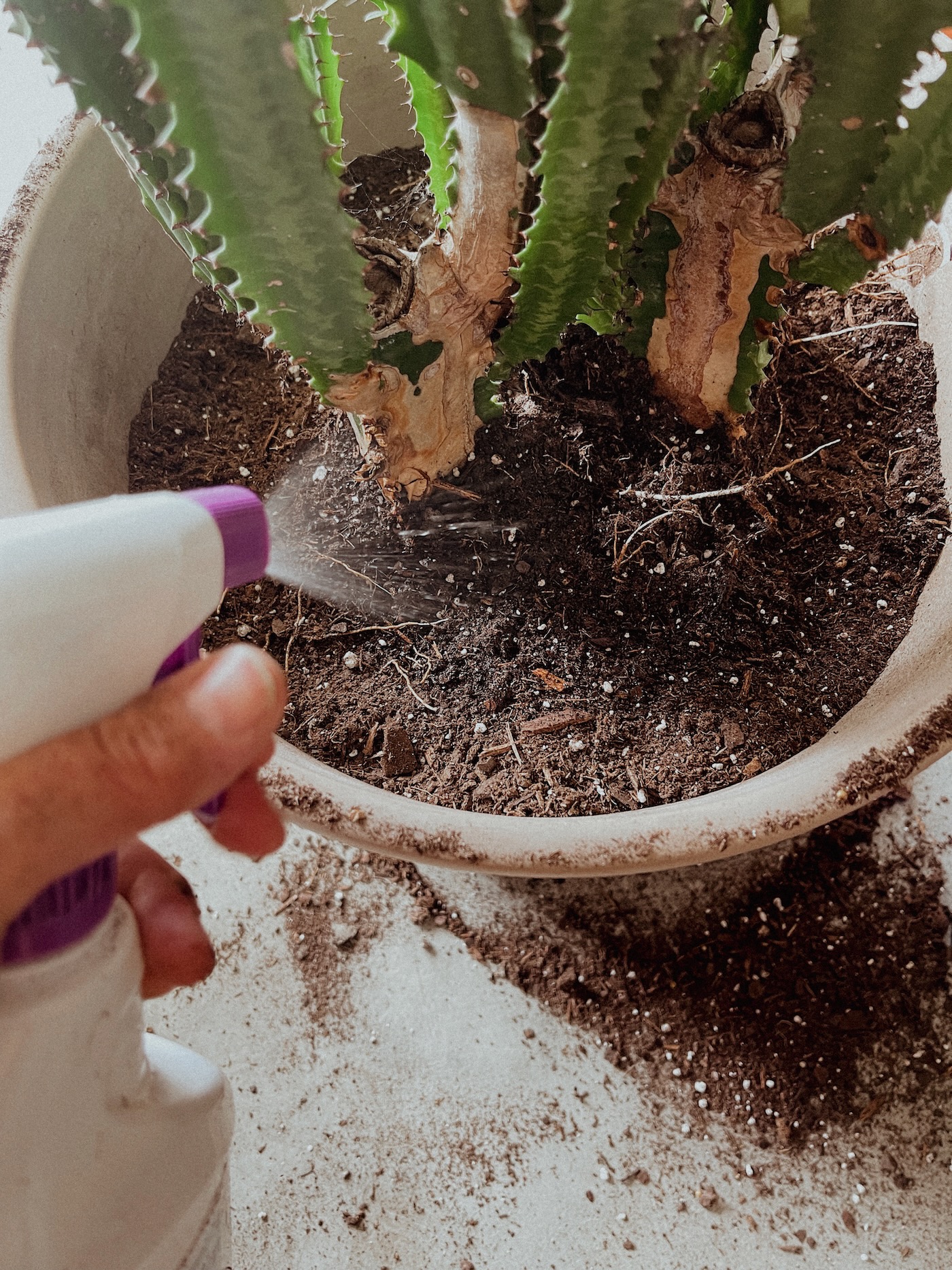
- After spraying, I let the plants sit in the garage for a few days to ensure bugs have enough time to vacate the premises! Be sure to check on them, spray them again if needed.
- After a few days, I will start to add fresh soil to the top. Then I bring them inside!
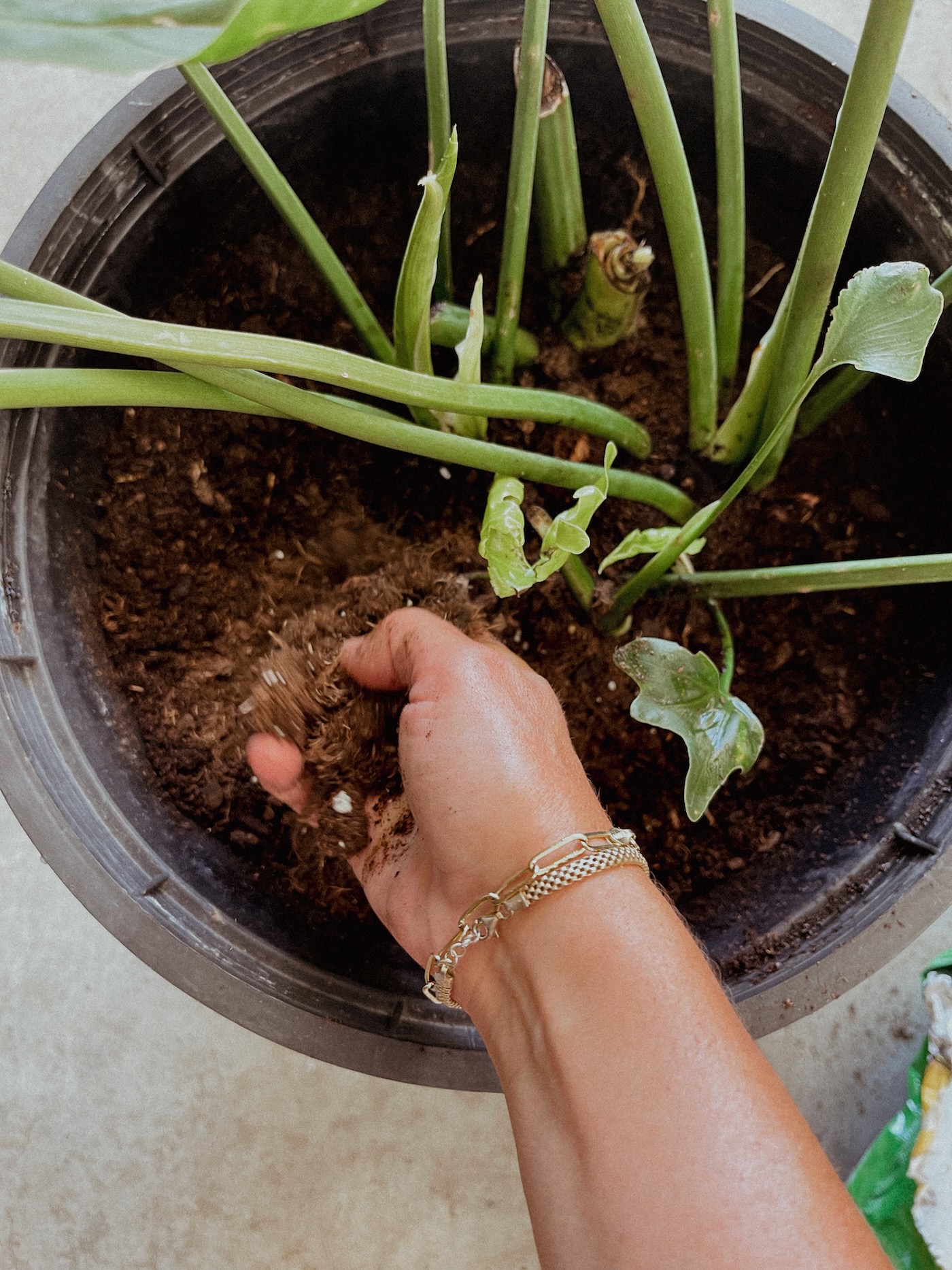
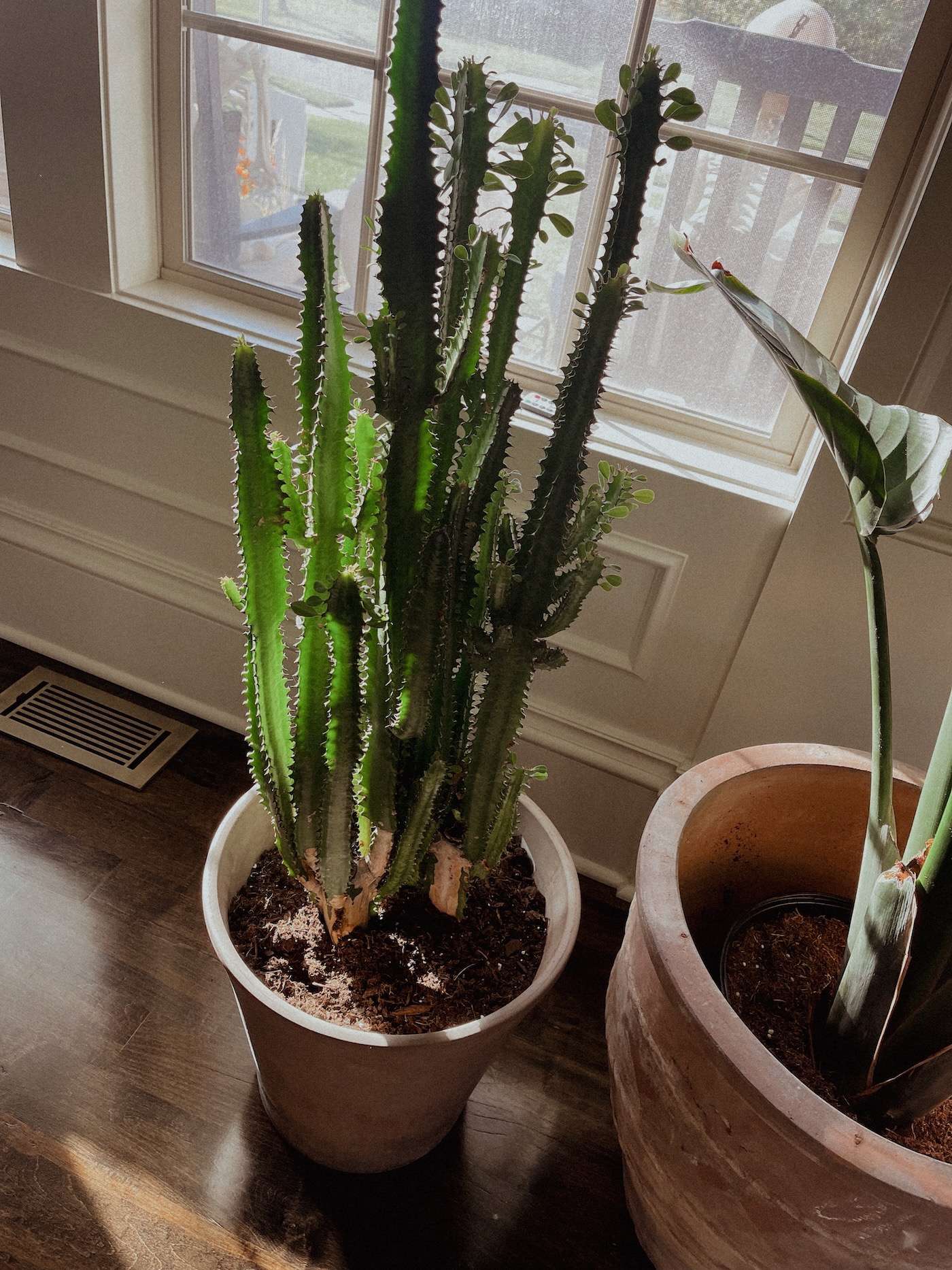
Things to Consider
- I know many people like to soak their plants before bringing inside. This also helps eliminate bugs, etc. I don’t like to soak my cactus because I’m trying to dry them out before bringing inside. Once inside, I really don’t water my cacti much in the winter months. If I do, it’s just a small drink about once month. For other houseplants I am bringing back inside, I will water and fertilize. Again, soaking is a personal preference.
- If I see anything that was brought back inside, I simply spray the same insect spray inside on top of the soil.
- For all indoor plants besides cacti, I water and fertilize about once every 2-3 weeks. I LOVE Happy Happy Houseplant fertilizer for all my plants. You will see a difference and you can fertilize all year long.
- If you have leafy plants you are bringing back inside (fiddle leaf figs, banana plants, etc), but sure to wipe down the leaves with some neem oil before bringing back inside.
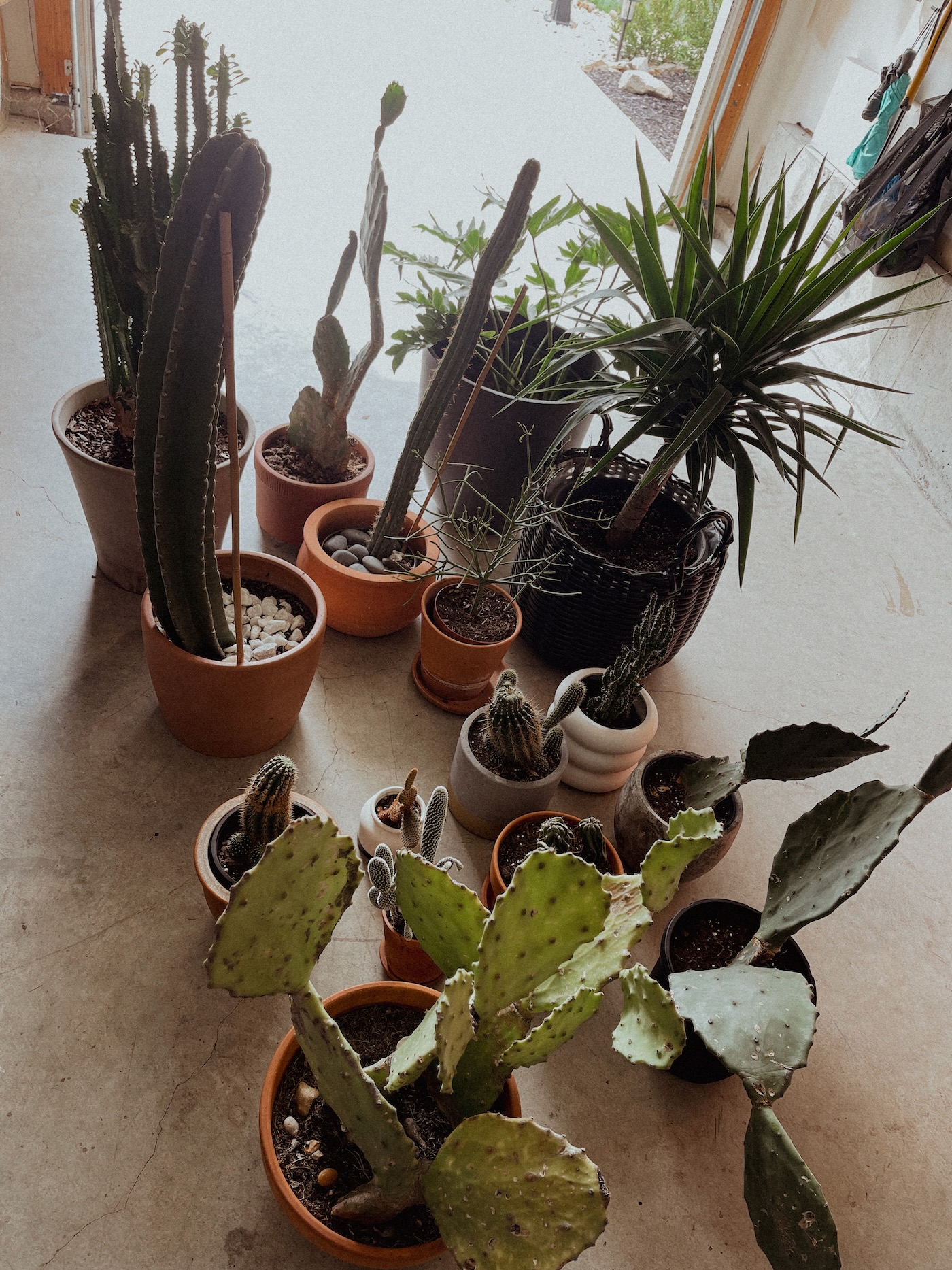
Update 2024
This year, as I started to transition my front porch plants, I discovered they were just soaked and waterlogged. In this case, I decided to remove these plants from their pots and remove the wet soil around the root ball. I actually found some grubs in my fiddle leaf fit pot! I’m airing these out in the garage for a few days and will repot with fresh soil. The one cactus I had on the front porch was not soaked, so I used the method above to transition it.
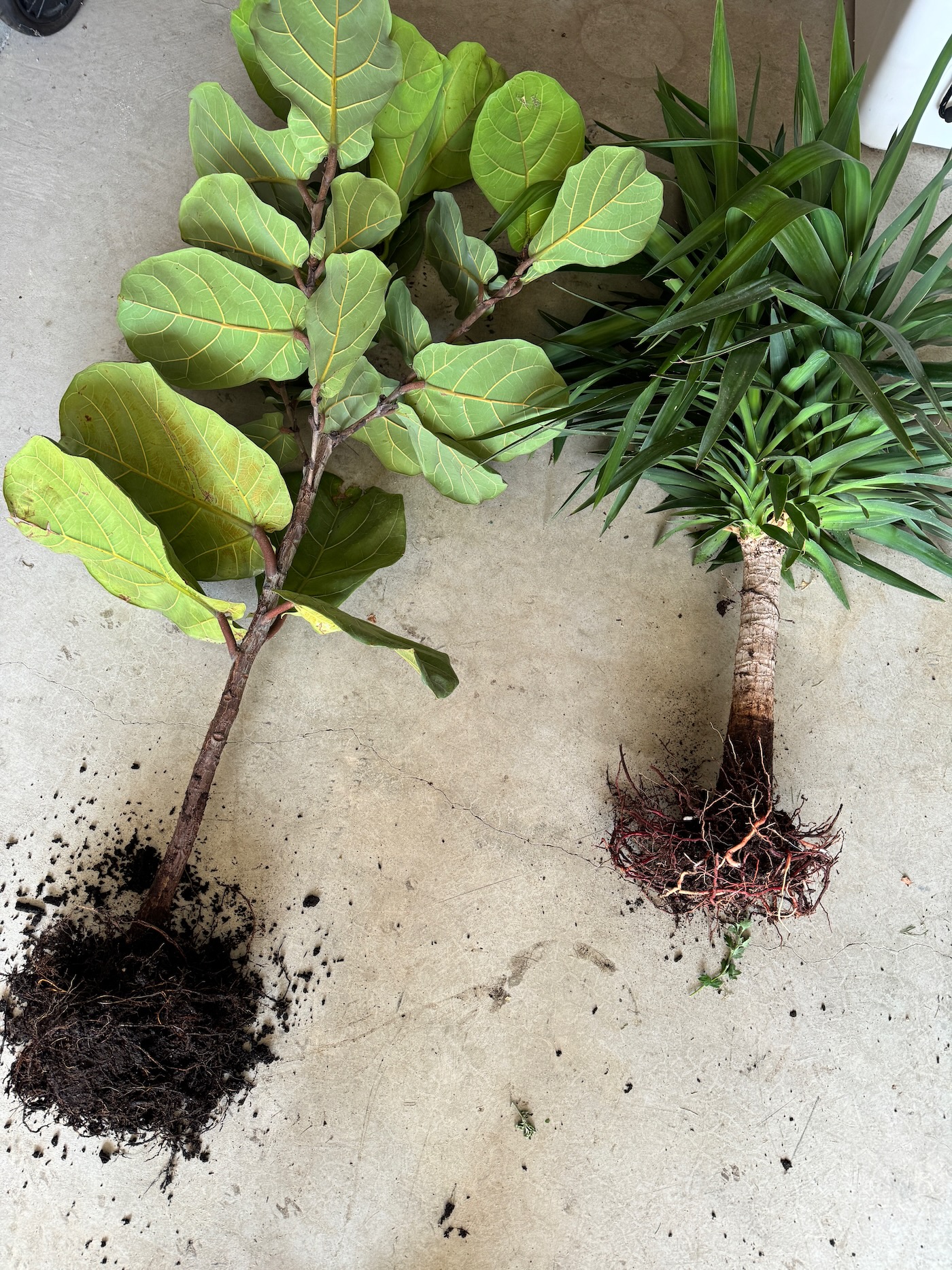
I hope you found how to transition indoor plants back inside helpful! You can see that this method isn’t hard or intimidating. It just takes a little patience. I highly suggest you assess your plants for bugs/critters/water levels and then decide how to proceed! Please consider bringing some of your houseplants outside in the warmer months. They will love it! XO

BRB, moving a few to my garage now! Thanks for this post-this is the first time I moved a couple outside and also wanting to move a new tropical plant inside for the winter.
Glad this was helpful!!